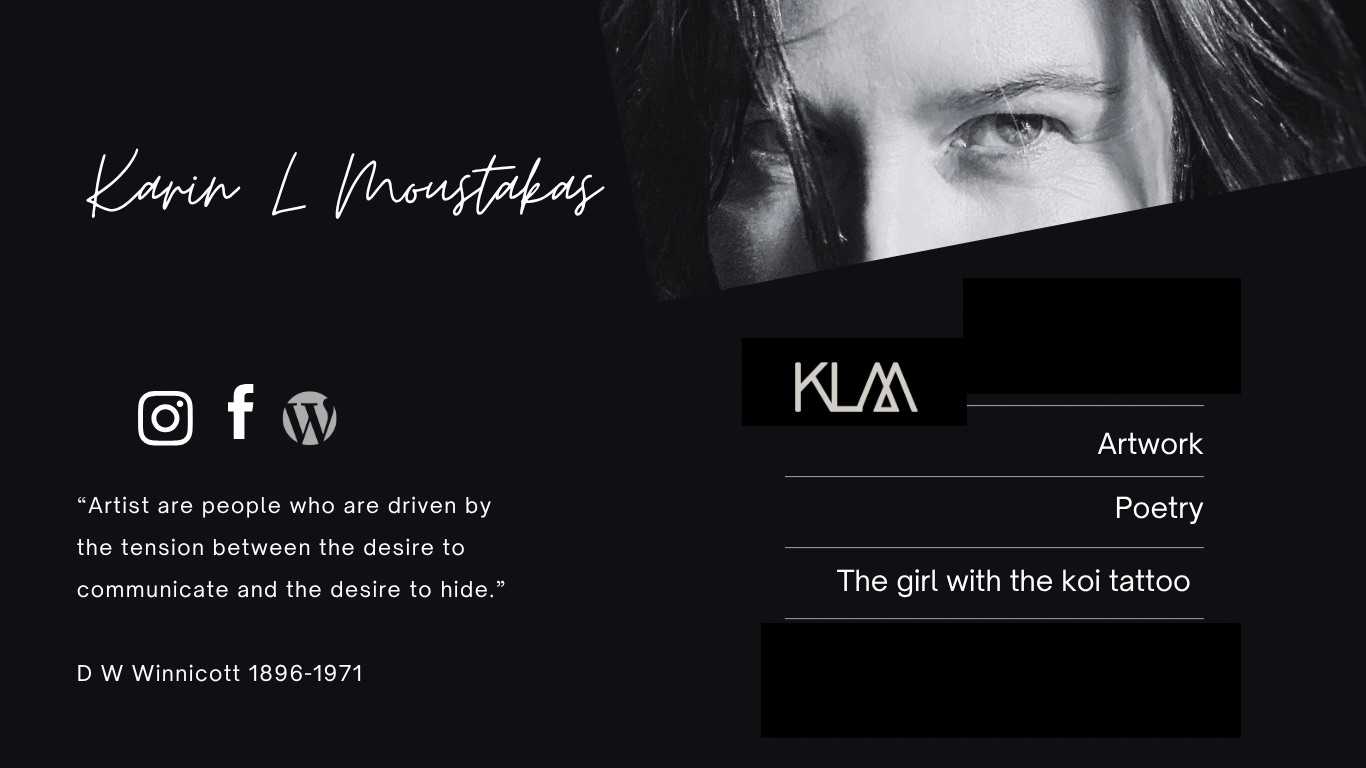
Karin Moustakas
Riebeek West, Malmesbury
Classically trained fine artist focusing on representations based on the science of visual eye movement and memory, or saccadic memory : The eye is a camera.
Message
Karin was born in Cape Town, South Africa. Her love for art started at a young age. She started her journey with pottery at the age of eleven years. Fine Arts and Art History was a major throughout senior school. She enrolled in a BA( LLB) degree, but soon realised that it was not her passion and switched to Art the following year. Her life took a different direction thereafter focusing on capitalistic goals in the corporate -and private sectors as well as entrepreneurial ventures.
Now, in midlife, she has settled in the picturesque rural Swartland, living a quieter lifestyle and focusing on painting and writing. Her painting has changed over the years from still life themes, waterscapes and koi(realism) to abstract figurative portraits. She emphatically states that she will never marginalise or cap her current processes, as part of her nature is to explore, learn and discover. Life is never static and therefore she will embrace change, finding creative ways to adapt.
Classically trained in Fine Arts, she started painting in tempera, egg yolk and distilled water. This is a technique used in iconography. In her oil paintings, her method is the inverse of the technique used in iconography, starting with a watered down application of flooding colour and staining the canvas creating layered colour resulting in rich, exquisite colours and textures. Oil painting allows her to work wet on wet resulting in the spawning of an intuitive colour palette. Every painting is an exploration of application, form and hues until the end of its production and never a result of a standardised process or recipe. The idea is never to create a realistic image. The process is an explorative dissection of the subjects or objects in order to represent it in a different way that still makes sense to the onlooker. ( Very much like a child dissembling objects to explore the parts that makes it whole.)
Vision science of eye movement or saccadic movement and memory processing are explored and presented in her figurative abstract paintings. The camera and its mechanism represents the way the human eye collects data. A camera collects all the data at once, but the human eye collects data by saccadic scanning, examining all the elements in its field of vision, collecting data selectively to form a synoptic image. Similarly Karin’s abstract figurative work represents a faceted map of selective visual observation and saccadic memory. The colour application is mostly a play of juxtaposed hues to infer directional light on the subject and to create a mood. These pieces are merely human images, expressing human qualities.
Her work are influenced by cubism and Sub-Saharan African masks and artefacts found in abundance in and around most touristy areas in and around South-Africa. She has been following Dutch Artist, Peggy Kuipers ( her work displays a distinctive colour palette and simplified human features) and Teil Duncan ( her figurative work displays a juxtaposed play of colour and light mapping postured figures).
Statement
The human brain was designed to recognise and imprint facial features from infancy. Recognising our mother’s features is the first visual memory stored in our brains. Throughout our lifetime we store all kinds of visual memories in our brains.
My abstract figurative paintings reflects an analytical approach to saccadic scanning and memory. By tapping into that reservoir of stored impressions of human features and gestures I endeavour to communicate the figurative in a different way. Any figurative portrait executed therefore consists of archived references of my visual memory. Every painting is an exploration of form and function resulting in a redacted image.
Working mostly wet on wet ( A mixture of oil paint, walnut oil and artist spirits. ) without a predetermined colour palette I would dissect the subject into planes of geometrical shapes. Colours, shapes and lines gradually morph into an image where all the elements are balanced and expressing a particular mood. The representations of the subjects are deliberately inferred allowing the onlooker total autonomy of their visual experience.
The facetted features refer to the complexities of the human condition and how overwhelming the fast paced world has become to mankind. As an artist, I am fuelled by visual stimulation, but have become increasingly overwhelmed by the vast amount of imagery available on the technology I use daily. Through my work I am simplifying subjects, reordering the visual and relying on visual memory to create visual representations that are calming and almost meditative when looked at.
Every completed painting resembles a completed cycle and redacted representation. Less is more.
Powered by Artwork Archive